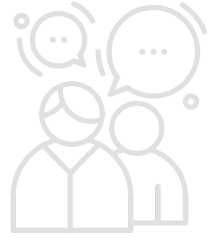Worried about doing this on your own? You may be able to get free legal help.
If your income or assets are above the limits, you will need to meet what is called a “spend-down” in order to be eligible for Medicaid coverage. You can think of a spend-down as a number. Your spend-down number is the amount your income or assets go over the income limits for Medicaid eligibility.
You meet the spend-down amount by getting medical bills in the amount of your spend-down. This means that as soon as you have medical bills in the amount of the spend-down, you have met your spend-down, even though you may not yet be able to pay all of those bills. In this way, a spend-down is similar to a deductible under an insurance policy.
It is very important that you keep copies of all medical bills, prescription receipts, and records of other medical expenses. When you get enough bills to meet your spend-down, send copies of the bills to your caseworker at the local DHS office. The program will then process the bills so that you can receive a medical card.
You will have 6 consecutive months to send bills to DHS. If you take longer than 6 months to send your bills to DHS, you may become ineligible.
Pay-in spend-down
Pay-in spend-down gives you the option of paying your spend-down amount to HFS. If you are enrolled in pay-in spend-down, there are three ways to meet your spend-down:
- Use your medical expenses toward your monthly spend-down amount;
- Pay your monthly spend-down amount to IHFS; or
- Combine medical expenses (bills and receipts) and a payment to IHFS.
Example: You are enrolled in pay-in spend-down. Your spend-down is $100. You need a medical card for August, but only have a $50 medical bill to use toward your spend-down. To combine medical expenses and a pay-in payment, you may show the $50 bill to your HFS caseworker and send a $50 payment to HFS to meet spend-down for August.
People who are older, blind or have a disability may qualify for pay-in spend-down. If you qualify for this program, HFS will send you a notice and enrollment form with a return envelope. You must sign the form and send it to HFS to enroll.
Types of expenses that can be used to meet the spend-down
You can use any of the following to meet your spend-down:
- Physician and hospital services,
- Medications,
- Cost of travel to get medical care (when Medicaid is not directly paying for travel),
- Medicare and other medical insurance premiums, deductibles or other insurance co-payments,
- Some dental expenses, many in-home care services, and over-the-counter medicines when prescribed by a physician,
- Nursing home services,
- Clinic services,
- Medical supplies and equipment prescribed by your doctor,
- Eyeglasses,
- Insurance premiums, including Medicare premiums,
- Speech, occupational and physical therapy, or
- Co-payments or deductibles you pay for medical care.
The bill for the medical services or medications purchased must be from within the past six months. Unpaid bills older than 6 months should be re-issued by your doctor before you can use them. You may not use a bill more than once to meet your spend-down.
If you have not met your spend-down for six consecutive months and you are not on a medical waiting list, HFS will send you a notice stating that your case has been canceled. However, you may reapply for Medicaid when you have enough bills to meet the spend-down.
Legal Comment
Worried about doing this on your own? You may be able to get free legal help.

Only logged-in users can post comments. Please log in or register if you want to leave a comment. We do our best to reply to each comment. We can't give legal advice in the comments, so if you have a question or need legal help, please go to Get Legal Help.